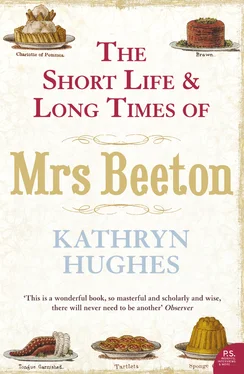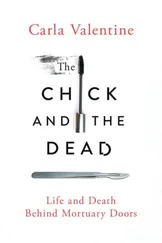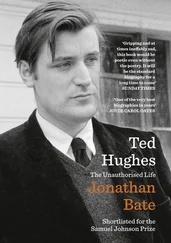The Levicks answered Freeman’s advertisement and were doubtless delighted to find such an eligible person was once again interested in their family. Sarah Freeman had not only read PPE at Somerville but had ‘come out’ as a debutante. She was beautiful, chic, had a happy marriage and two young children. After the blustery horrors of Nancy Spain, it must have been lovely to think that such a ladylike, feminine girl wanted to write the story of Mrs Beeton. Nonetheless, the elderly mother and son were not about to hand over control of the Beeton legacy. Mrs Freeman would be allowed to take away selected material to look at in batches, and these loans would be carefully logged in and out by Rodney, writing in pencil on Sir Mayson’s original archive index. But in return she must undertake to skate over those parts of the story that were potentially embarrassing and which Nancy Spain had gone on to hint at even more strongly in a revised edition of her book published in 1956. As if to reinforce the fact that this is the version of Isabella Beeton’s life that Sir Mayson had wished presented to the world, Freeman’s book, which was published in 1977, comes with a baton-passing Preface from none other than the now elderly Montgomery Hyde.
Nearly thirty years have passed since Freeman’s book. History, if not exactly the Victorians, is once again in fashion. New technologies have revolutionized – the word really is not too strong – access to archival sources. There are fresh ways of thinking about the importance of book history (and this, as much as biography, is the discipline that presses most closely on Mrs Beeton’s story). Cooking and eating practices are no longer simply the concern of domestic science teachers but stand full square in our attempts to understand how people lived and traded a century or three ago. We know more than ever about what the Victorians wrote about their domestic lives, what they felt about them and, most importantly, the gap that lay between.
But it is not simply changing contexts that make Mrs Beeton ripe for a new biography. In the late 1990s bits of the Mayson Beeton archive began to appear on the market. Some of the precious love letters were sold off at Sotheby’s, others at Bonhams, and still more items of ephemera appeared in smaller auction houses in the West Country. It is difficult to track the exact pathways by which this material, once so closely guarded, came onto the market, but it seems to have been the consequence of the fact that Rodney Levick was now elderly, insane, and in need of expensive residential accommodation. What can be said for certain is that by 2000, the year after Levick’s death, the Mayson Beeton archive had been dispersed into several different hands. In 2002, after two years of sleuthing and negotiating, I managed to buy or borrow virtually all the important pieces of the archive and reassemble it once again. The difference is that, this time, there are no restrictions on what may be done with the material.
As its title suggests, this book has attempted two distinct tasks. On the one hand it is a straightforward reconstruction of the known facts of Mrs Beeton’s life. By going deep into the public archives, and working through registers and rate books, it has been possible to find out a great deal more about the girl who was born Isabella Mary Mayson in 1836 and who, by freakish chance, became one of the most famous women in history. What is more, as the first biographer who has had untrammelled access to Beeton’s letters and diaries, I hope I have managed to get closer than before to her interior life. There are still, however, large gaps in the record and there are stretches when Mrs Beeton retreats from view, back into the lived but unrecorded past where only novelists can roam.
The second point of this book is to explore the way that, almost from the moment of her death at the age of 28 in 1865, the idea of ‘Mrs Beeton’ became a potent commercial and cultural force. Detached from her mortal body, the ghostly Mrs Beeton could be appropriated for a whole range of purposes. In the 140 years since she died she has been turned into the subject of a musical and several plays. She was once almost on Broadway. She has been used to sell every kind of foodstuff from Cornish pasties to strawberry jam. Every October images from her famous book are turned into bestselling Christmas cards. At the time of writing you can take your pick from Mrs Beeton’s Cookery in Colour, Tea with Mrs Beeton, Mrs Beeton’s Healthy Eating , and, oddest of all, Mrs Beeton’s Hand-Made Gifts (although this is nothing compared with Mrs Beeton’s Caribbean Cookery and Microwaving with Mrs Beeton from a couple of decades ago). The image of her face – that calm/stern/fat/thin face – has been worked into tea towels and stamped on table mats. You can even buy an apron adorned with Mrs Beeton’s likeness in which to wrap yourself like a second skin, in the hope perhaps that her qualities – whatever they might be exactly – will rub off. For if Mrs Beeton is still to be remembered in another 150 years’ time it will not be for writing the Book of Household Management , a book that surely very few people have read right through, but rather for holding up a mirror to our most intimate needs and desires. By representing ‘Home’ – the place we go to be loved and fed – Mrs Beeton has become part of the fabric of who we feel ourselves to be.
CHAPTER ONE ‘Heavy, Cold and Wet Soil’
MRS BEETON MAY HAVE come down to us as a shape-shifter, but her story starts in a settled enough place, at a time when most people still lived a minute from their parents, when men automatically followed their father’s trade, when girls nearly always shared their Christian name with an aunt or cousin, and when it was not unusual to die in the bed in which you had been born. Thursby, in what was then called Cumberland, is a large village wedged between the Lakes and the Borders, flanked by the Pennines on one side and the Solway Firth on the other. It is not on the way to anywhere now, nor was it in the late eighteenth century, when the daily coaches between London and Carlisle were a distant rumble 5 miles to the northwest.
Most of the 240 inhabitants of Thursby owed their living to the ‘tolerably fertile’ gravel and loam soil, which was parcelled up into a series of small mixed farms, owned by ‘statesmen’ or independent yeomen who employed anything from two to twenty men. In 1786 Thursby got a new curate, John Mayson, grandfather to the future Mrs Beeton. The curateship and the countryside taken together might suggest something rather smart, a gentleman vicar perhaps, with a private income, an MA from a minor Oxbridge college, and a passion for the flora of the Upper Lakes, the kind of man you find pottering in the background of so many of the people who made and changed the Victorian world. This, certainly, is the impression that Mrs Beeton’s family would conspire to create in years to come. When Isabella Beeton’s marriage was announced in The Times in 1856, the fact that she was the granddaughter of the late Revd John Mayson of Cumberland was shoe-horned into the brief notice. Seventy years later when dealing with the National Portrait Gallery Mayson Beeton insisted on having his mother’s background blurb rewritten to include the important fact that her grandfather had been a man of the cloth.
But if anyone had bothered to look more closely they would have discovered that Revd John Mayson was not quite the gentlemanly divine that you might suppose. He had been born in 1761 just outside Penrith to another John Mayson, a farmer who was obliged to rent his land from another man. As his Christian name suggests, John Mayson had drawn the lucky ticket of being the oldest son, the one in whom the family’s slight resources would be invested as a hedge against a chancy future (there were a couple of younger sisters who would need, somehow, to be taken care of). John would have gone to school locally and left around the age of 14, a superior kind of village boy.
Читать дальше












